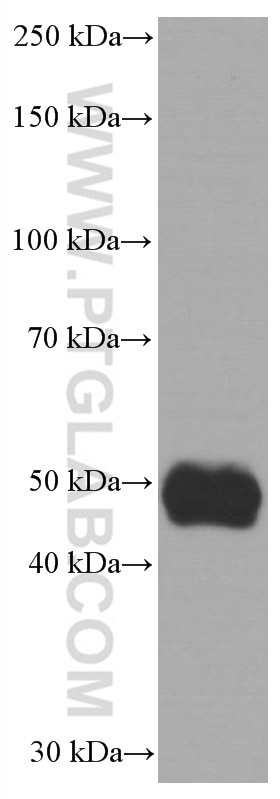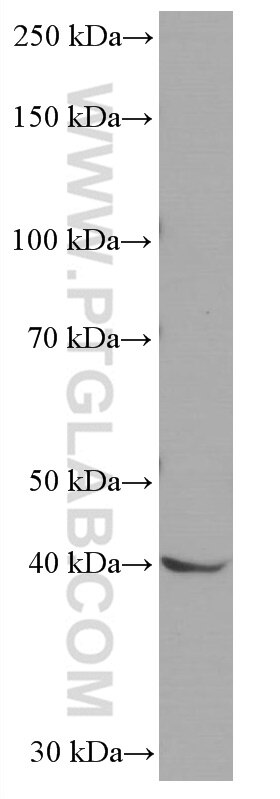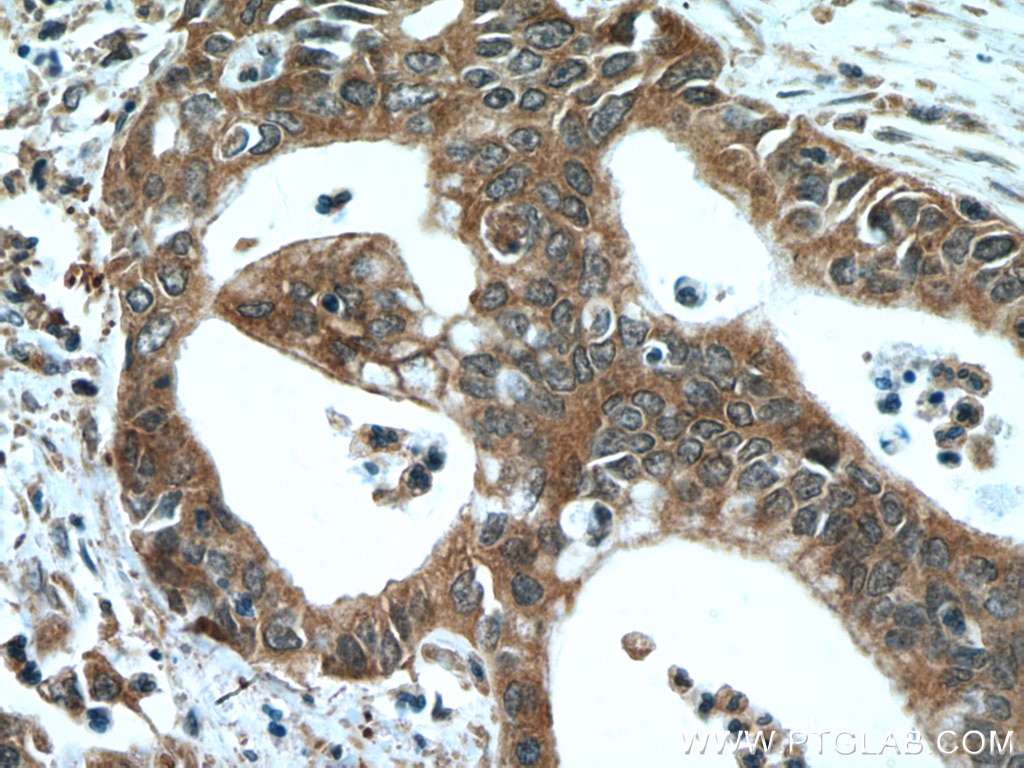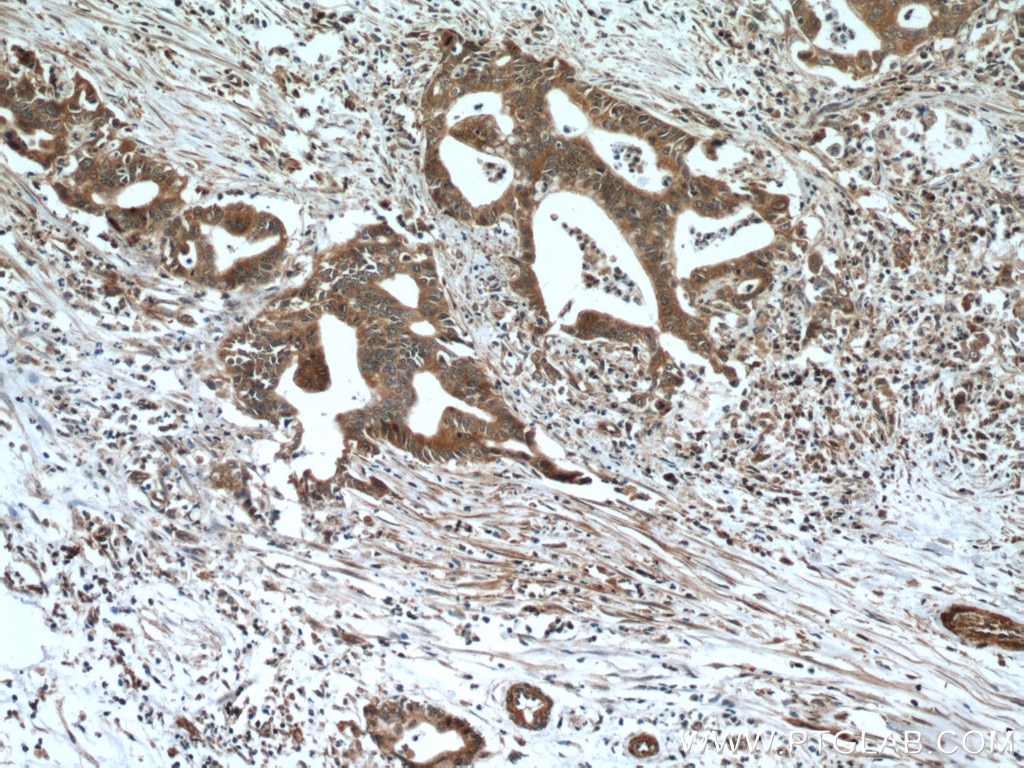NEUROD1 Monoklonaler Antikörper
NEUROD1 Monoklonal Antikörper für WB, IHC, FC (Intra), ELISA
Wirt / Isotyp
Maus / IgG1
Getestete Reaktivität
human, Maus
Anwendung
WB, IHC, FC (Intra), ELISA
Konjugation
Unkonjugiert
CloneNo.
3E10F1
Kat-Nr. : 66691-1-PBS
Synonyme
Geprüfte Anwendungen
Produktinformation
66691-1-PBS bindet in WB, IHC, FC (Intra), ELISA NEUROD1 und zeigt Reaktivität mit human, Maus
| Getestete Reaktivität | human, Maus |
| Wirt / Isotyp | Maus / IgG1 |
| Klonalität | Monoklonal |
| Typ | Antikörper |
| Immunogen | NEUROD1 fusion protein Ag27606 |
| Vollständiger Name | neurogenic differentiation 1 |
| Berechnetes Molekulargewicht | 356 aa, 40 kDa |
| Beobachtetes Molekulargewicht | 40-50 kDa |
| GenBank-Zugangsnummer | BC009046 |
| Gene symbol | NEUROD1 |
| Gene ID (NCBI) | 4760 |
| Konjugation | Unkonjugiert |
| Form | Liquid |
| Reinigungsmethode | Protein-G-Reinigung |
| Lagerungspuffer | PBS only |
| Lagerungsbedingungen | Store at -80°C. 20ul Größen enthalten 0,1% BSA. |
Hintergrundinformationen
NeuroD is a member of the basic helix-loop-helix (bHLH) family of transcription factors. The basic helix-loop-helix (bHLH) proteins are transcription factors that are required for several aspects of development, including cell type determination, terminal differentiation and sex determination. Members of the myogenic determination family, MyoD, myf5, myogenin and MRF4, all have bHLH domains.These proteins function by forming heterodimers with E-proteins and binding to the canonical E-box sequence CANNTG. Neuro D is expressed transiently in a subset of neurons in the central and peripheral nervous systems at the time of their terminal differentiation into mature neurons. Moreover, ectopic expression of Neuro D in Xenopus embryos induces premature differentiation of neuronal precursors and Neuro D can convert presumptive epidermal cells into neurons.The lack of NeuroD in the brain results in severe defects in development. Human mutations have been linked to a number of types of diabetes including type I diabetes mellitus and maturity-onset diabetes of the young. The calculated molecular weight of NEUROD1 is 39 kDa, but the modified NEUROD1 protein is about 45-50 kDa.











